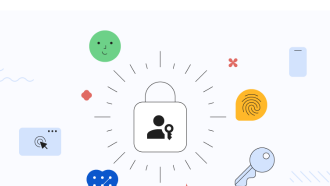Google's venture into the generative artificial intelligence (AI) space with its advanced chatbot, Gemini, indicates that we are progressing fast in terms of language learning models.
The search engine giant is eyeing to compete with the likes of ChatGPT which serves as one of the most popular AI chatbots at present.
Originally launched as Bard, Google has since revamped its AI under the new moniker, combining powerful multimodal capabilities into a single platform.
Here's everything you need to know about Google Gemini and how to leverage its features.
What is Google Gemini?
(Photo: Solen Feyissa from Unsplash) ChatGPT made AI chatbots popular among users, with other companies catching up with OpenAI. With Gemini's surge, it's about time for Google to showcase what's in store with it.
Initially introduced as Bard in early 2023, Google Gemini represents an important upgrade and consolidation of Google's AI offerings, including the enterprise-driven Google Duet.
Gemini functions on the innovative large language model (LLM) technology, supporting a range of tasks from text generation to complex multimodal functions like audio and code creation.
Related Article: Google Gemini 1.5 Pro Can Now Listen to Audio Files Thanks to Latest Update
The Evolution of Google's AI: From Bard to Gemini
The transformation from Bard to Gemini involved significant enhancements, culminating in the integration of various services under one umbrella in February 2024. Gemini now stands as a direct competitor to ChatGPT, equipped with capabilities to generate text, images, videos, and more.
What Does Google Gemini Offer
Google Gemini excels in its multimodal functions, allowing users to perform diverse tasks within a single interface. This includes generating text, images, video, audio, and code, making it a versatile tool for professionals and creatives alike.
Google has also integrated Gemini into its Chrome browser and previously into Workspace apps like Gmail and Docs at an enterprise level, although the standalone AI chatbot remains free for basic use.
What's more, a new rumor claims that it's coming with real-time responses to catch up with OpenAI's chatbot.
Signing Up and Getting Started with Google Gemini
Accessing Google Gemini is straightforward for anyone with a Google account. Users can simply log in to the Gemini site using their Google credentials.
The interface resembles typical AI chatbots, offering a user-friendly environment with prompt suggestions and a customizable interaction model.
Exploring the Gemini Interface
The Gemini interface includes a main chat page where users can input prompts, a menu for accessing different settings, and options to upgrade to advanced tiers like Gemini Advanced.
Users can interact with the chatbot by entering commands that the AI can process, from simple queries to complex requests.
Using Google Gemini for Various Tasks
Google Gemini is adept at handling a wide range of requests. Users can ask it to explain complex theories, assist with content creation, or even engage in creative tasks like writing stories or generating artistic images. Its ability to understand and generate content based on detailed prompts makes it a powerful tool for both educational and professional purposes.
Advanced Features and Paid Tiers
For users seeking more advanced capabilities, Google offers the Google One AI Premium tier, which includes access to the latest and most potent version of Gemini, along with additional perks such as increased storage and premium app features. This paid tier enhances Gemini's functionality, particularly for professional and enterprise users.
Privacy and User Control
Privacy is a paramount concern with AI systems, and Google Gemini provides easy controls for managing data privacy and security.
As a user, you can easily access settings to manage their data, turn off tracking, or delete history, presenting a secure and personalized experience.
Read Also: Google's Gemini AI Will Work On Your Pixel 2 XL-Android 10, 11 Devices Now Supported






